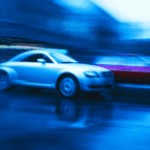In this article learn Learn how to find velocity given mass and distance using fundamental physics concepts like kinetic energy, work, and Newton’s Second Law.
Key Takeaways
- Finding velocity given mass and distance requires an understanding of kinetic energy, work, and Newton’s Second Law of Motion.
- Key formulas:
- $KE = \frac{1}{2} m v^2$ (Kinetic Energy),
- $W = F \cdot d$ (Work),
- $F = m a$ (Newton’s Second Law).
- Steps to find velocity: Determine the force acting on the object, calculate the work done, find the object’s final kinetic energy, and calculate the final velocity.
- This understanding helps in solving physics problems and deepens the appreciation for the forces and motion governing our world.
Understanding the variables
Before we proceed, it’s essential to define the variables we’ll be working with:
- Mass (m): Mass is the amount of matter in an object, typically measured in kilograms (kg).
- Distance (d): To know more visit this article on What is Distance and displacement in physics?
- Velocity (v): Know more about follow these links – Instantaneous velocity, Average Velocity
Establishing the Connection: Kinetic Energy and Work
The key to connecting mass and distance to velocity lies in understanding two fundamental concepts in physics: kinetic energy and work.
- Kinetic Energy (KE): Kinetic energy represents the energy an object possesses due to its motion. The formula for kinetic energy is:
$KE = \frac{1}{2}m v^2$ - Work (W): Work is the energy transferred to or from an object through the application of force along a displacement. The formula for work is:
$W = F \cdot d$
Here, $F$ is the force applied, and $d$ is the distance traveled.
Newton’s Second Law of Motion
Newton’s Second Law states that the acceleration of an object is directly proportional to the net force acting on it and inversely proportional to its mass. Mathematically, it is represented as:
$F = m a$
Here, $F$ is the force, m is the mass, and a is the acceleration.
Finding Velocity: Step-by-Step Explanation
Step 1: Determine the force acting on the object.
To find the force, we need to know the object’s acceleration and mass. If the object is in free fall, we can use acceleration due to gravity (approximately $9.81 m/s^2$). If the object is acted upon by a known force, divide that force by the object’s mass to find the acceleration.
Step 2: Calculate the work done on the object.
Using the formula for work, $W = F \cdot d$, calculate the work done on the object using the force determined in Step 1 and the given distance.
Step 3: Determine the object’s final kinetic energy.
The work-energy theorem states that the work done on an object is equal to its change in kinetic energy. If the object starts from rest, its initial kinetic energy is zero. Therefore, the final kinetic energy $(KE_{final})$ is equal to the work done:
$KE_{final} = W$
Step 4: Calculate the object’s final velocity.
Use the formula for kinetic energy to find the object’s final velocity, with $KE_{final}= \frac{1}{2} m v^2$. Rearrange the equation to solve for velocity $(v)$ :
$v = \sqrt{\frac{2 KE_{final}}{m}}$
By plugging in the values for KE_final and mass, you can calculate the object’s final velocity.
Solved Example: Finding Velocity Given Mass and Distance
Solved Example Problem
A 5 kg box is being pushed horizontally along a flat surface by a constant force of 20 N. If the box travels a distance of 10 meters, find its final velocity. Assume there is no friction.
Solution:
Step 1: Determine the force acting on the object.
In this example, the force acting on the object is given as 20 N.
Step 2: Calculate the acceleration of the object.
Use Newton’s Second Law of Motion to find the object’s acceleration $(a)$:
$F = m a$
Rearrange the equation to solve for acceleration:
$a = F / m$
Plug in the values for force (F) and mass (m):
$a = 20 N / 5 kg = 4 m/s^2$
Step 3: Calculate the work done on the object.
Use the formula for work, $W = F d$, to find the work done:
$W = 20 N \times 10 m = 200 J$
Step 4: Determine the object’s final kinetic energy.
As the box starts from rest, its initial kinetic energy is zero. Therefore, the final kinetic energy ($KE_{final}$) is equal to the work done:
$KE_{final} = W = 200 J$
Step 5: Calculate the object’s final velocity.
Use the formula for kinetic energy to find the final velocity (v):
$KE_{final} = \frac{1}{2} m v^2$
Rearrange the equation to solve for velocity:
$v = \sqrt{(2 KE_{final} )/ m}$
Plug in the values for $KE_{final}$ and mass:
$v = \sqrt{(2 \times 200 J) / 5 kg} = \sqrt{80} = 8.94 m/s$ (approximately)
The final velocity of the box is approximately $8.94 m/s$.
Practice Questions
Practice Question 1:
A 4 kg object is being lifted vertically by a force of 60 N. If the object is lifted to a height of 3 meters, find its final velocity. Assume there is no air resistance.
Solution
Since the object is lifted vertically, you need to consider the force of gravity acting on it. The net force on the object is the difference between the applied force and the gravitational force.
It is given in the question that : mass $m=4Kg$,
Applied force $F_{applied}=60N$
displacement $d=3 m$
Let us first find the gravitational force acting on the object:
$F_{gravity} = m g = 4 kg \times 9.81 m/s^2 = 39.24 N$
Net force acting on the object is
$F_{net} = F_{applied} – F_{gravity} = 60 N – 39.24 N = 20.76 N$
Now that we know about net force we can easily find the acceleration and work done
$a = F_net / m = 20.76 N / 4 kg = 5.19 m/s^2$
$W = F_{net} d = 20.76 N \times 3 m = 62.28 J$
Now, final kinetic energy is
KE_final = W = 62.28 J
Now that we know about kinetic energy we can easily calculate the final velocity:
$v = \sqrt{\frac{2 * KE_{final}}{m}} = \sqrt{\frac{2 \times 62.28,\text{J}}{4,\text{kg}}} = \sqrt{31.14} = 5.58,\text{m/s}$ (approximately)
Practice Question 2:
A 10 kg sled is being pulled horizontally on a frictionless ice surface by a force of 50 N. The sled travels a distance of 8 meters. Find its final velocity.
Solution
Since there is no friction, the net force acting on the sled is equal to the applied force.
Determine the force acting on the object:
$F_{net} = 50,\text{N}$
Calculate the acceleration:
$a = \frac{F_{net}}{m} = \frac{50,\text{N}}{10,\text{kg}} = 5,\text{m/s}^2$
Find the work done:
$W = F_{net} * d = 50,\text{N} * 8,\text{m} = 400,\text{J}$
Determine the final kinetic energy:
$KE_{final} = W = 400,\text{J}$
Calculate the final velocity:
$v = \sqrt{\frac{2 * KE_{final}}{m}} = \sqrt{\frac{2 * 400,\text{J}}{10,\text{kg}}} = \sqrt{80} = 8.94,\text{m/s}$
The final velocity of the sled is 8.94 m/s.
Quiz on this topic
Given below is a short 5-question quiz about the concepts discussed in this article. Test your knowledge about whatever you have learned on this topic of finding velocity given mass and distance. Choose the correct option among the choices given in the question.






